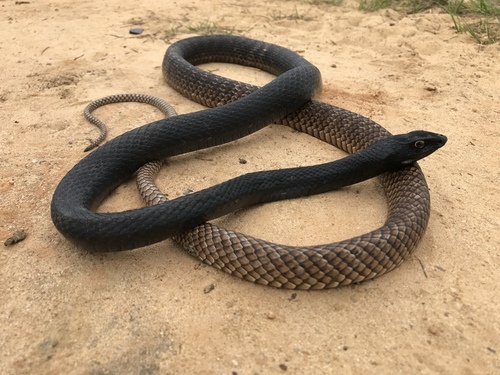
Coachwhip
The Eastern Coachwhip, Masticophis flagellum, is a swift, agile snake with a distinctive whip-like tail. Found in sunlit scrublands, it excels in speedy pursuits of prey, playing a vital role in controlling small animal populations within its ecosystem.
10-20 years
Lifespan
Length: 91 - 244 cm
Size
Low
Aggression
Least Concern
Conservation Status
Stable
Population Trend
Characteristics
Masticophis flagellum, known as the Eastern Coachwhip, is a slender, fast-moving snake found in the southern United States. It thrives in open, sandy habitats like scrublands and deserts. Notable for its long, whip-like tail and smooth scales, it is a diurnal predator, feeding on lizards, birds, and small mammals.
Distribution Range of the Coachwhip
Masticophis flagellum, commonly known as the coachwhip snake, is native to the United States and Mexico. Its geographical distribution spans the southeastern United States, extending westward to California and northward into Kansas and southern Missouri. It is also found in parts of northern Mexico.
Coachwhip's Habitat
Environmental Conditions
The coachwhip snake typically inhabits arid to semi-arid regions, including deserts, grasslands, open woodlands, and scrublands. It prefers areas with loose, sandy, or rocky soil which facilitates burrowing. The climate in these regions varies from hot deserts to more temperate grasslands.
Ecological Niche
As a diurnal predator, the coachwhip snake plays a crucial role in controlling the populations of small mammals, lizards, insects, and occasionally other snakes. Its long, slender body allows it to move rapidly and efficiently through its environment, making it an adept hunter in open and often sparse vegetation.
Copyright @ Nature Style Limited. All Rights Reserved.
 English
English